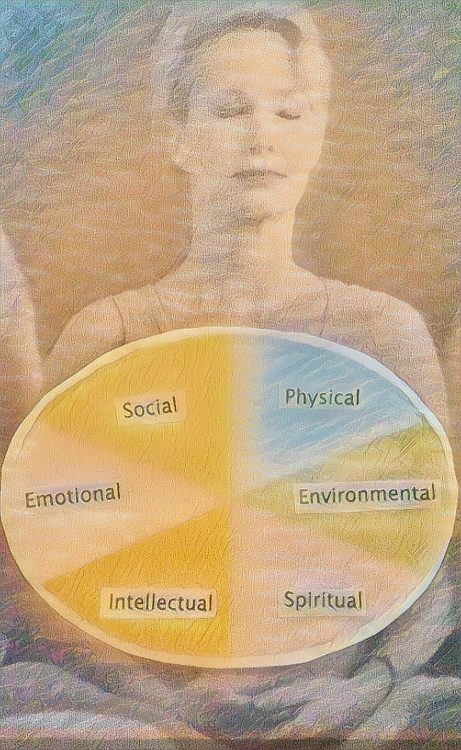I’ve whispered the same wish over burning birthday candles, and to skies on many New Year’s Eves that have come to pass. I heard once how the healthy have many wishes on such occasions, whereas the sick have but one. This wish remains rooted deep in my heart, unwavering for the past 12 years. A wish for health to be restored in my body.
I live with a chronic illness for which little is known. I plod along, within a circumscribed question mark, which my prognosis is apart of. I know many who have fully recovered, I also know many who currently have not. One thing I know for certain is this: When you learn the truth of the body, its lability and fragility, you also understand that truth applies to life itself. It is both precious and precarious.
I want to hold space for my wish for health, but I also want to hold space for living the most fulfilling life I possibly can. I don’t want health to be the gatekeeper to experiencing happiness, because that is not within my control. That idea puts joy and wellbeing always on the horizon – out of reach – if I am sick in the present. I could be sick for a few months, a year or even more. That’s a long time to put off happiness and to feel worthy of it. This idea is not exclusive to those who are sick. Projecting happiness into the future is a trap for any perpetual goal setter – especially prevalent in modern society. In all cases, you lose out living fully in what’s happening right now.
This naturally leads one to question their beliefs surrounding wellness, and what does wellness really mean. The belief that it is solely dependent on health can’t explain experiences I’ve had. I have met far sicker people then me, who are far happier. I have known far healthier people than me, who are some of the most unhappy people I have ever known. Wellness is therefore not solely dependent on health, but arguably very affected by it. This then leads to the next question: Can the by-products of wellness – happiness and joy – be cultivated like one cultivates flowers in a garden, amidst a chronic illness like mine?
A man by the name of Dr. Bill Hettler answered this question. In 1977 Dr. Hettler developed a wellness paradigm that integrates what he determined to be the six dimensions of wellness. His paradigm demonstrates how wellness is multifaceted – for which physical health is but one piece. Not to say that physical health doesn’t directly influence the other pieces. Rather, knowing about these six dimensions of wellness allows you to foster the ones you do have. The stronger they become, the more impenetrable they are to illness’ effects. Therefore, when one or more pieces are jeopardized, the others play a greater role to balance out these compromised ones.

The six dimensions of wellness he described are: physical, social, emotional, environmental, intellectual and spiritual. Under each, I have put ways to strengthen them, especially if you’re struggling with the physical piece of the wellness pie.
1. Physical Wellness
Physical wellness is likely the first thing that comes to mind when thinking about wellness. This category encompasses a balanced diet, regular exercise and adequate sleep. It’s incredibly individualized depending on your illness, physical abilities and what works best for your body. Pacing is key (balancing rest with activity). Although not for everyone, utilizing an integrative approach to your healthcare may be beneficial for managing symptoms and optimizing your quality of life.
2. Social Wellness
Social wellness depends on our connections to each other throughout our lives. It’s our ability to relate, interact, receive support from and contribute within these relationships. Isolation is a common experience for those living with chronic illness, due to the nature of illness. Online support groups are a great resource for when leaving your house is not possible. Volunteering, joining support groups and joining clubs are just a few ways of meeting people if you are able to. A crucial aspect of social wellness when you are chronically ill is having relationships that have access intimacy – a term coined by disability activist Mia Mingus.
3. Emotional Wellness
Emotional wellness is having the ability to tune into your emotional milieu. It’s learning to be mindful of your thoughts and feelings. It’s also being able to express those same thoughts and feelings, and being able to listen to others when they express theirs. Great ways to work on emotional wellness are journaling, speaking to a therapist, having creative outlets for expression (art, music, dance, etc.), keeping a regular meditation practice (https://www.headspace.com) and utilizing a checking-in exercise (listed below this article).
4. Intellectual Wellness
This aspect of wellness requires you to be stimulated through continued learning, problem solving, processing, interacting and being intellectually challenged by the world around you. Brain fog can definitely impede this piece of the wellness pie. Passive ways to engage your intellect include watching documentaries and listening to podcasts or TedTalks. More active ways include reading books, crossword puzzles, learning a new hobby, taking up a class in something that interests you, debating with friends about current events and writing articles for The Mighty!
5. Environmental Wellness
Environmental wellness is two-fold. Firstly, it addresses maintaining a healthy, positive home and workplace environment. Emotional toxicity/negativity can weaken this dimension of wellness significantly. The latter aspect of it is your connection to nature. Having a relationship with nature has so many benefits, including positively impacting mental health and reducing stress level. However, chronic illness can limit one’s access to nature. If this is the case for you, here are some ways to connect to nature if you can’t get outside. If you do have access to the outdoors, consider a short walk, setting up a hammock to rest in, lying under a tree or doing a two-minute barefoot grounding exercise (listed below this article).
6. Spiritual Wellness
Spiritual wellness looks different for everyone. In general, it’s any practice which embraces an existence beyond the tangible physical realm of our experience. For some, spiritual wellness involves participating in organized religion (church, synagogue, mosque, etc.). For others, it can look like private prayer, yoga, mediation, quiet reflection, even a gratitude practice. Whatever practice brings meaning and purpose to your life, continue to integrate it.
Our wellness dimensions are not static but dynamic. Overall balance requires drawing from the full, to sustain the lacking. By incorporating and building on all fronts of wellness, I may be physically unwell, but I am well. I wish for you to be well too.

Checking-In Exercise for Emotional Wellness: This exercise is great to do several times throughout the day.
Pause and take several deep breaths. You can close your eyes, or stare at a fixed location. Tune into your body and feel its many sensations. Quietly ask yourself, “In this moment right now, what do I feel.” Repeat this question if you have trouble tuning into your body. The answer may be physical – it could be you need to go to the washroom but have been putting it off, or even just to stretch. The answer may be a feeling that requires further steps – you may be upset and could really use someone to talk to. Whatever you experience, acknowledge it and honor it as best as you can, the moment you can.
Barefoot Grounding Exercise for Environmental Wellness: This exercise can be done seated, standing or walking.
Go outside to a quiet space where you will not be disturbed. Take your shoes off, and sink your feet into the earth. Feel the sensations of the earth’s texture, density and temperature beneath your feet. Take full, deep, rhythmic, slow breaths. Mentally begin to repeat “inhale” with each deep inhalation, and “exhale” with each slow exhalation. With each breath you take, release your cares, concerns, burdens and worries into the earth. Feel them sinking deep into the ground, leaving your body –feeling lighter and lighter. Send gratitude to the earth when you have finished.
We want to hear your story. Become a Mighty contributor here.

